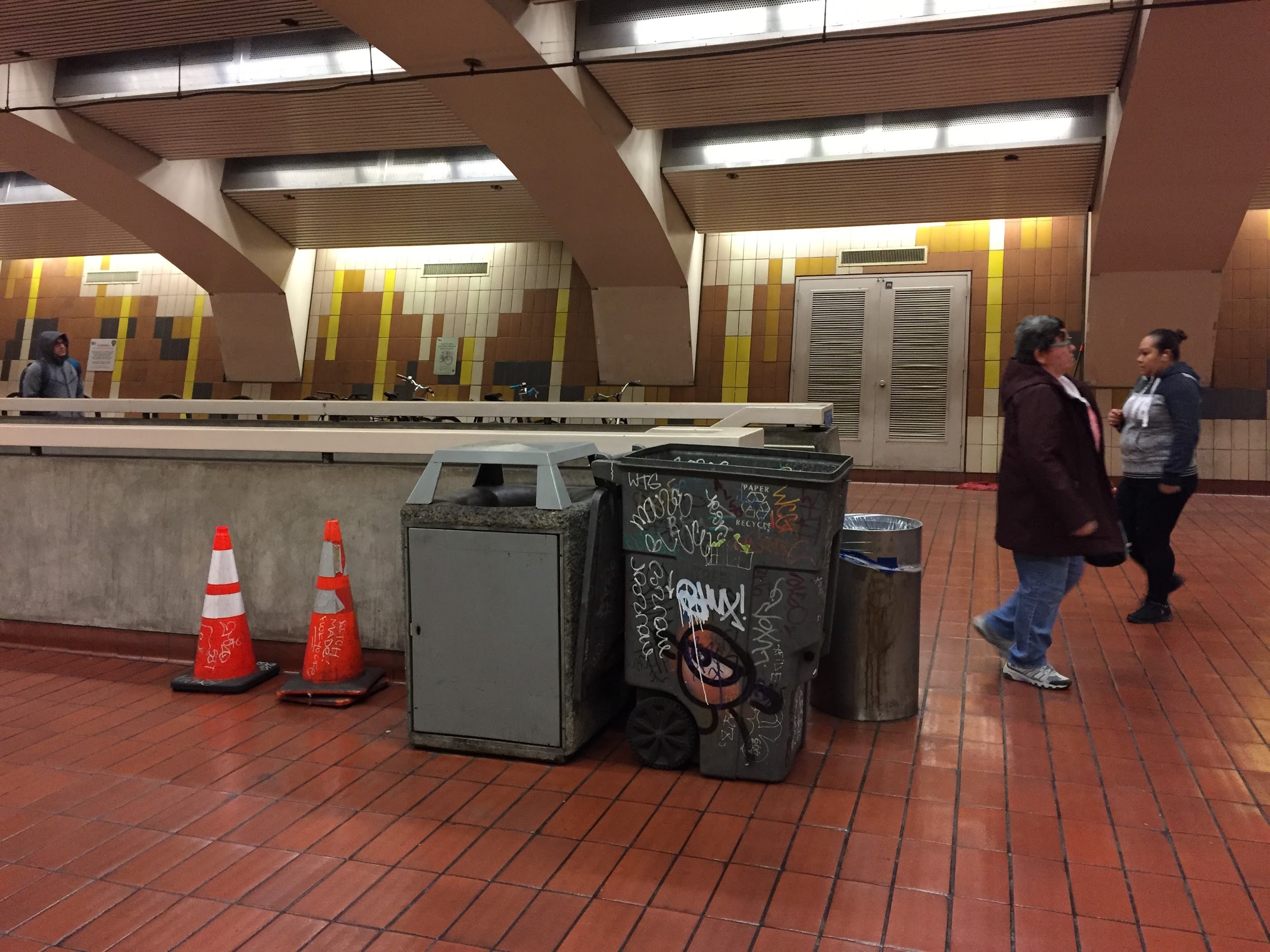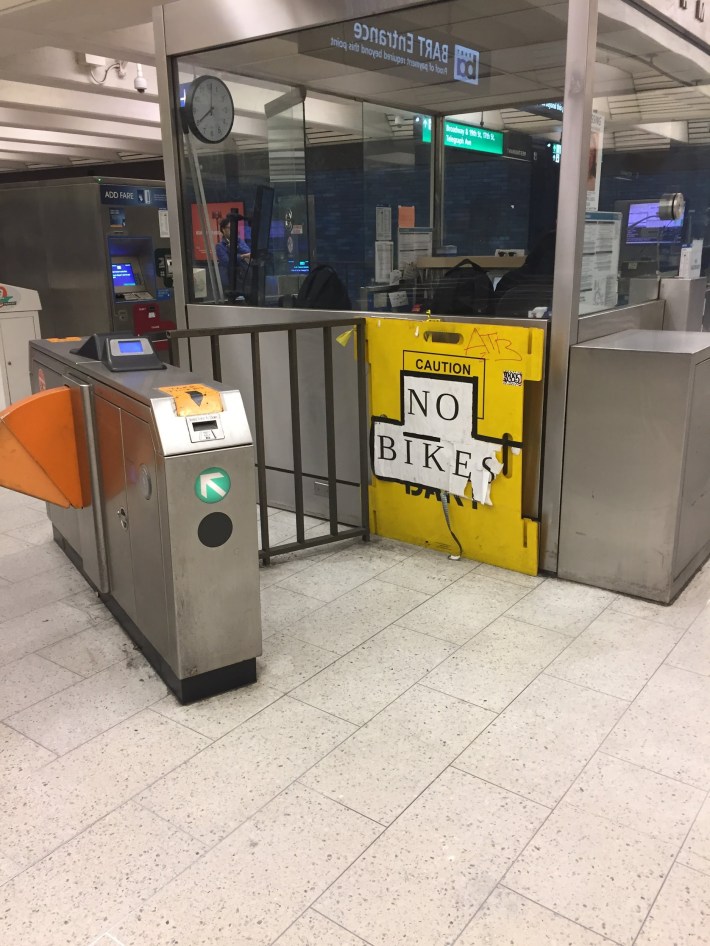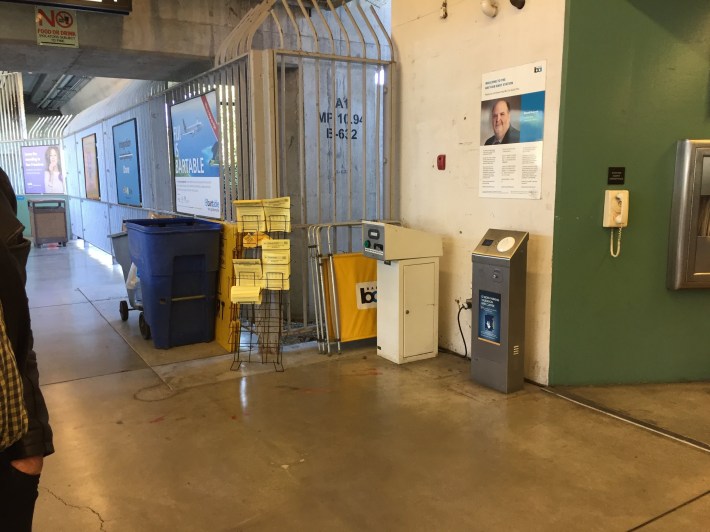Guest Commentary: BART’s New Manager Could Save Bay Area Transit
3:23 PM PDT on June 18, 2019

Trash and traffic cones stored in a grimy BART station. Just a little of the overwhelming evidence that BART doesn’t get customer experience. Photo: Ian Griffiths
Note: Metropolitan Shuttle, a leader in bus shuttle rentals, regularly sponsors coverage on Streetsblog San Francisco and Streetsblog Los Angeles. Unless noted in the story, Metropolitan Shuttle is not consulted for the content or editorial direction of the sponsored content.
With the announcement that BART’s General Manager, Grace Crunican, will be stepping down in July, the BART Board has a rare opportunity to change the trajectory of public transit in the Bay Area. To accomplish that, the Board needs to select a General Manager who can lead two fundamental transformations:
1. BART must become a customer-focused organization
BART is a huge, complex organization with thousands of employees, billions of dollars of assets, hundreds of miles of tracks, its own police force and fleet of trains, and its own directly elected board.
In trying to manage such a large bureaucracy, BART’s leadership has increasingly lost track of what matters most: its customers.
Too often, BART runs its system based on what tends to be least difficult for its own operations and staff, not what would make getting around the Bay Area easier for passengers. BART’s stagnating ridership and declining customer satisfaction, which hit an all time low of 56 percent in 2018, underscores this disconnect.

Entering a BART station is often an unwelcoming and dismal experience, where station agents are locked in imposing glass boxes, and important information is communicated with handmade signs affixed with duct tape. Maintenance equipment and garbage dumpsters are regularly stored in plain sight and in the way; public announcements are inaudible and convoluted on and off the trains; and confusing schedule changes on weekends and evenings make using transit inconvenient.
To establish accountability to customers, the next BART General Manager should follow the lead of many other North American transit agencies and successful companies and appoint a “Chief Customer Officer.” Staff should be reorganized to answer to a Customer Experience Department that has authority to make real changes to practices and culture. Right now there is no shared vision for customer service at BART, with no one taking overall responsibility for rider experience. That has to change.
Changing BART into a more customer-focused organization requires not only internal realignment but also promoting a sense of common shared purpose among employees--something that is sorely lacking. Employees should feel empowered and encouraged to do things in the best interest of customers, rather than feel like they will be punished for trying to innovate.
Lastly, changing staff culture also will require reforming hiring practices to bring in a new generation of innovative, skilled leaders. The Bay Area is home to some of the world’s most innovative companies and user experience professionals. Too many BART senior leaders have spent their entire careers at the agency and only know the “BART way.”
2. BART must champion a seamless regional transportation system
BART’s ability to attract riders is connected to how well the regional system functions as a whole. Transit should provide efficient, convenient and affordable mobility between any points in the region--not just from BART station to BART station. The quality and coordination of public transit on all the 26 Bay Area transit agencies, which together carry three times as many riders as BART, are essential to BART’s success.
In the past, BART has been unwilling to integrate its fare system with other transit systems. There shouldn't be a "penalty" for transferring from a bus or train to BART.

While people across the Bay Area regularly express that they want integrated and seamless public transit, the transit agencies regularly resist. Leaders claim that overcoming regional differences or jurisdictional fragmentation is simply “too hard” to even attempt.
Transit operators, particularly BART, have used the excuse of having limited funding to avoid even discussing greater regional integration.
This must change if we care about things like inequality, expanding access to affordable housing, combating global warming, and reducing traffic. To survive and thrive, transit agencies must either work together to provide a superior product, or face continued decline.
BART’s General Manager has out-sized influence in regional discussions of integration, due to BART’s status as the backbone of Bay Area transit. BART carries a quarter of the region’s transit riders and will soon connect its five largest counties.
BART’s next GM can become the Bay Area’s biggest champion for regional integration, leading by example, and using BART’s size and influence to promote an ambitious, inclusive vision for better mobility.
Recently, Crunican has shown new enthusiasm for collaborating to develop a regional approach to setting transit fares, one of the most central obstacles to regional integration. At a recent Clipper Executive Board meeting, she stated “We [the transit agency directors] ought to be talking about the complexity to the user, the difficulty on affordability, fairness issues, and the issue of the cost savings that we would have if we come together.”
Whether BART follows through on these words will depend on the next General Manager’s philosophy and leadership abilities. SFMTA is also searching for a new director. And Therese McMillan took over as Executive Director of the Metropolitan Transportation Commission in March.
Together, this amounts to a once-in-a-generation chance to align the Bay Area’s biggest transportation agencies and chart a bold new course, putting the public interest above organizational and political needs. Let's not miss this opportunity.
***
Ian Griffiths is a Co-Founder and Director at Seamless Bay Area, a non-profit advocating for policy reforms to create a world-class, integrated regional transportation system. From 2015-2019, he worked in BART’s Planning department, and previously worked for Metrolinx (Toronto) and AECOM on transportation planning, urban design, and customer experience initiatives.
Stay in touch
Sign up for our free newsletter
More from Streetsblog San Francisco
Commentary: Making Valencia Better for Business
Curbside protected bike lanes with curbside parklets deliver on much-needed economic benefits for merchants while ensuring safety for all




